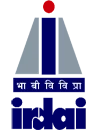India’s physiotherapy profession is entering a new era with the introduction of the Competency-Based Curriculum for Physiotherapy (2025), approved by the National Commission for Allied and Healthcare Professions (NCAHP). Here are the three most important updates that every physiotherapist should know:
- Degree Duration Aligned with MBBS
The Bachelor of Physiotherapy (BPT) program has now been extended to a 5-year degree, which includes 4 academic years plus a 1-year mandatory internship. This change brings the BPT program in line with the MBBS degree, reflecting the growing importance and complexity of physiotherapy in India’s healthcare system. The extended duration ensures that students receive in-depth theoretical knowledge and practical clinical training, preparing them for real-world healthcare challenges.
- NEET Mandatory for Admission
From now on, qualifying the National Eligibility cum Entrance Test (NEET) is mandatory for admission to the BPT course. This means that aspiring physiotherapists must clear NEET after their 12th standard (with Physics, Chemistry, and Biology) to secure a seat in a recognized physiotherapy program. This move aims to standardize entry requirements, raise academic standards, and ensure only well-qualified students enter the profession, making physiotherapy education more competitive and streamlined across India
- Use of ‘Dr’ Title Officially Permitted
A landmark change in the new curriculum is that physiotherapists who complete their BPT from a recognized institution can now officially use the “Dr” prefix before their name, along with the “PT” suffix (e.g., Dr. Anjali Verma, PT). This official recognition enhances the professional identity of physiotherapists and aligns Indian practice with global standards. However, it is important to use the “PT” suffix to clearly indicate the professional designation and avoid confusion with medical doctors.
Key Differences Between Old and New 5-Year BPT Programs
1. Program Duration
- Old Program:
Typically 4–4.5 years (e.g., 4 academic years + 6 months of compulsory internship).
- New Program:
5 years (4 academic years + 1-year mandatory internship).
Aligns with MBBS structure to enhance clinical training depth.
2. Admission Criteria
- Old Program:
Admission based on state-level or institutional entrance exams (no uniform national standard).
- New Program:
NEET qualification mandatory for admission, standardizing entry requirements nationwide.
3. Curriculum Structure
- Old Program:
Theory-heavy with limited emphasis on practical skill integration.
Electives and skill courses were minimal (e.g., 12–14 discipline-specific electives in some programs).
- New Program:
Competency-based curriculum with focus on hands-on clinical training and simulation labs.
Credit-based system aligned with the National Credit Framework (NCrF) for global compatibility.
Includes primary healthcare training, ethics, and research modules.
4. Clinical Training
- Old Program:
6-month internship
Limited emphasis on real-time patient case management.
- New Program:
1-year internship with structured rotations in diverse clinical settings.
Supervised clinical postings integrated into every semester for skill reinforcement.
5. Professional Recognition
- Old Program:
No official “Dr” title for physiotherapists in most states.
Limited recognition as primary healthcare providers1.
- New Program:
“Dr” prefix + “PT” suffix officially permitted upon graduation13.
Recognized under ISCO Code 22-64 as primary healthcare practitioners.
Why These Changes Are Positive for Physiotherapists?
These reforms represent a major step forward for the profession:
- Standardization and Global Recognition: The changes bring Indian physiotherapy education in line with international standards, supporting global mobility and respect for Indian-trained professionals.
- Higher Professional Status: Official use of the “Dr” title and the alignment with MBBS duration elevate the status of physiotherapists within the healthcare system
- Improved Quality of Education: Mandatory NEET and a competency-based curriculum ensure that only the best candidates enter the field and that graduates are well-prepared for modern healthcare demands.
Potential Challenges for Students in the New 5-Year BPT Program
The upgraded 5-year Bachelor of Physiotherapy (BPT) program introduces significant academic and professional advancements but also brings new challenges for students:
1. Extended Academic Pressure
The 5-year duration, including rigorous coursework in anatomy, biomechanics, and therapeutic modalities, may increase academic stress. Students will need to manage a heavier workload, with theoretical exams and practical assessments requiring deeper understanding and longer study hours.
2. Demanding Clinical Training
The mandatory 1-year internship, combined with clinical rotations during the program, requires students to balance hands-on patient care with academic responsibilities. Managing real-world cases, especially in colleges without parent hospitals, could limit practical exposure and mentorship opportunities.
3. Physical and Emotional Strain
Physiotherapy involves physically demanding tasks like manual therapy and patient transfers, which can lead to fatigue. Students may also face emotional stress from managing patients with chronic pain or disabilities, requiring resilience and coping strategies.
4. Time Management Struggles
Juggling lectures, lab work, internships, and assignments over five years demands exceptional time management. Students might struggle to maintain a work-life balance, leading to burnout.
5. Financial and Opportunity Costs
The extra year adds tuition fees and delays entry into the workforce, which could burden students from low-income backgrounds. This might deter some from pursuing the program despite its long-term benefits.
Conclusion
While the 5-year BPT program elevates professional standards, students must navigate these challenges through institutional support (e.g., mentorship, financial aid) and personal resilience. Addressing these issues will be critical to ensuring the program’s success and student well-being. Overall, these updates mark a transformative shift for physiotherapy in India, promising better training, higher recognition, and greater opportunities for physiotherapists nationwide.

















